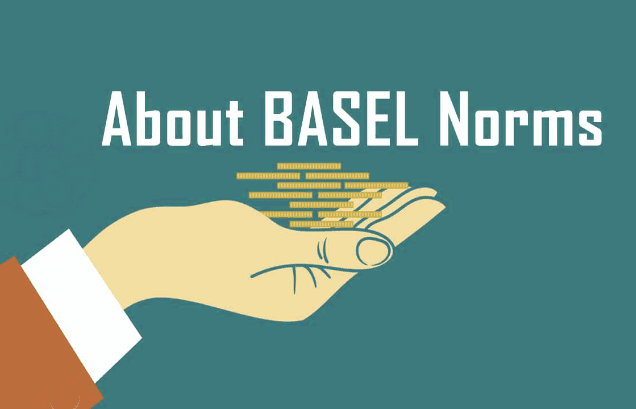Basel Norms | Crash Course for UGC NET Commerce PDF Download
Introduction

The Basel norms, also known as the Basel accords, are international banking regulations established by the Basel Committee on Banking Supervision, which was formed in 1974. The primary goal of these norms is to coordinate banking regulations globally to enhance the stability of the banking system. Here’s an overview of the Basel norms and their impact on the Indian economy.
Basel I
Introduced in 1988, Basel I aimed at improving the capital ratios of banks to cover credit risks, which arise when borrowers fail to meet their loan obligations. The Basel I framework set a minimum capital requirement of 8% of risk-weighted assets, where assets are weighted based on their risk levels.
Basel II
Launched in 2004, Basel II refined the Basel I guidelines by introducing three key principles:
- Banks must maintain a minimum capital adequacy ratio of 8% of risk-weighted assets.
- Banks should enhance their risk management practices.
- Banks are required to disclose their capital adequacy and risk exposure to central banks.
Basel III
Established in response to the 2008 financial crisis, Basel III, introduced in 2010, aimed to further strengthen the global banking system by addressing the shortcomings of Basel II. Key aspects include:
- Increasing capital requirements and improving the quality of regulatory capital, particularly Common Equity Tier 1 capital.
- Setting minimum leverage ratio requirements to control excessive leverage.
- Implementing capital buffers to be used in times of economic stress.
- Introducing the Liquidity Coverage Ratio (LCR) and Net Stable Funding Ratio (NSFR) to manage liquidity risk and ensure stable funding.
Basel III Guidelines
Basel III emphasizes four critical parameters:
- Capital: Banks must maintain a capital adequacy ratio of 12.9%, with a minimum Tier 1 capital ratio of 10.5% and a Tier 2 capital ratio of 2% of risk-weighted assets. Additionally, a capital conservation buffer of 2.5% and counter-cyclical buffers ranging from 0-2.5% are required.
- Leverage: A minimum leverage ratio of 3% is required, measuring Tier 1 capital against average total consolidated assets.
- Funding and Liquidity: Basel III establishes two key liquidity ratios:
- The Liquidity Coverage Ratio (LCR) ensures banks maintain a buffer of high-quality liquid assets to cover cash outflows.
- The Net Stable Funding Ratio (NSFR) requires banks to maintain a stable funding profile relative to their off-balance sheet activities, with a minimum requirement of 100%.
Basel Norms in India
The implementation deadline for Basel III norms in India was initially set for March 2019 but was extended to March 2020 due to the pandemic. The Reserve Bank of India (RBI) subsequently postponed the implementation for an additional six months, easing the capital provisioning burden on banks. This delay could affect how RBI and Indian banks are viewed by international stakeholders.
Conclusion
The Basel norms aim to harmonize global banking regulations to strengthen the international banking system and enhance the overall quality of banking. By addressing various risks and improving capital requirements, these norms enable banks to seize better financial opportunities and potentially increase their profitability.
|
237 videos|236 docs|166 tests
|





















